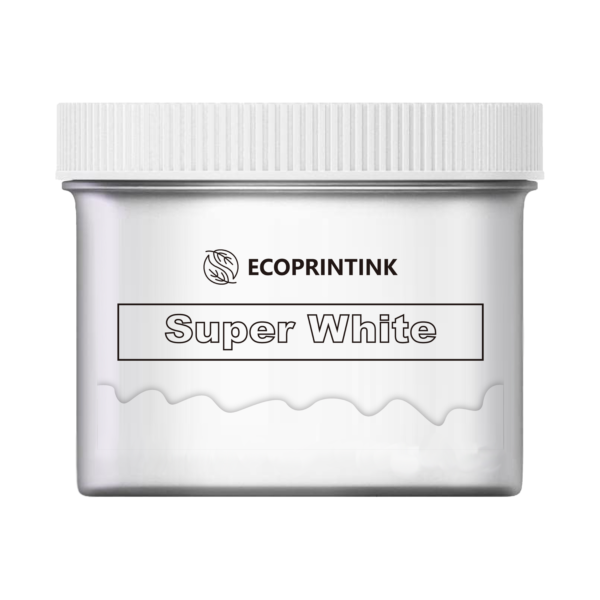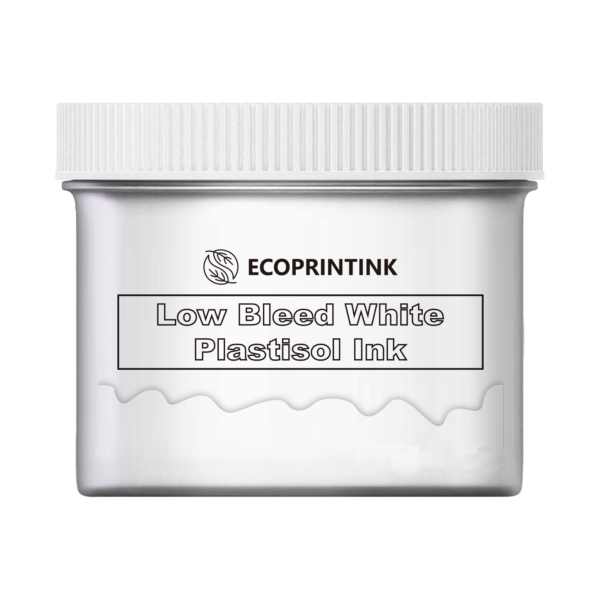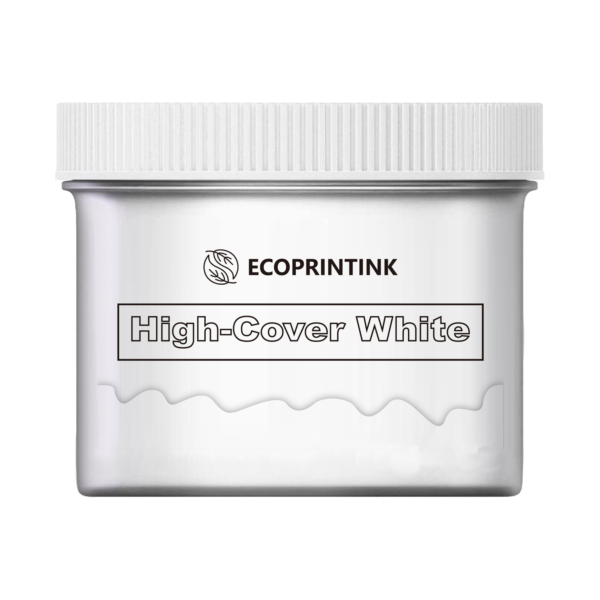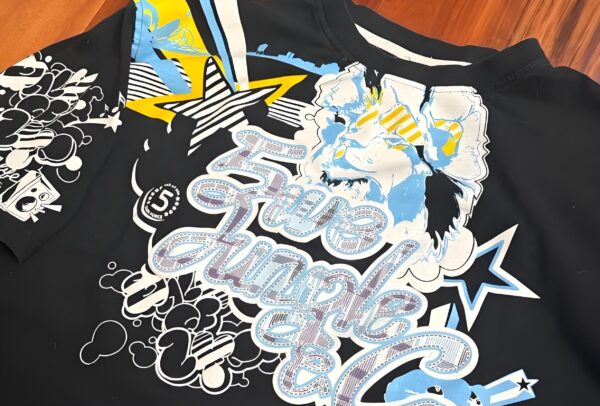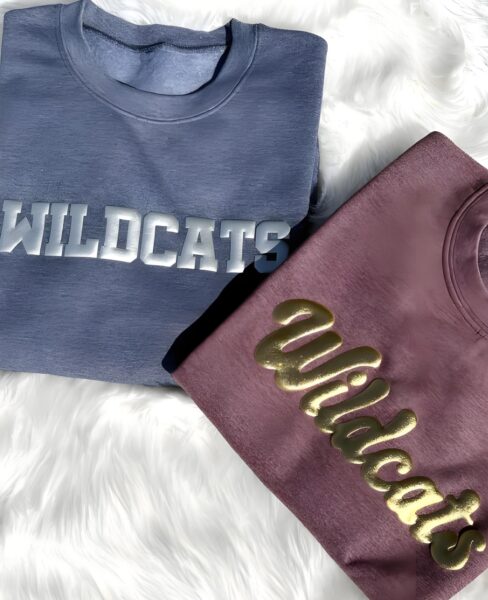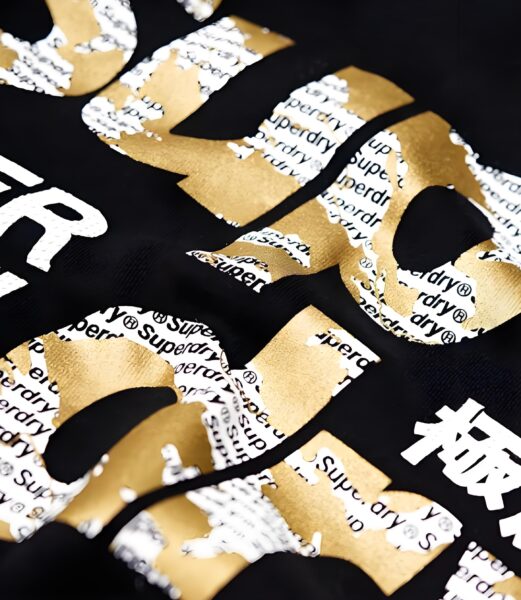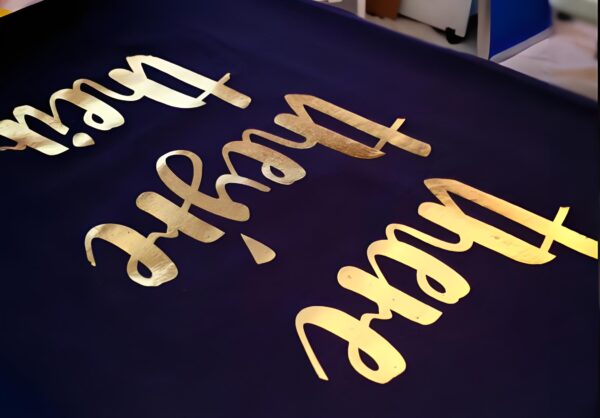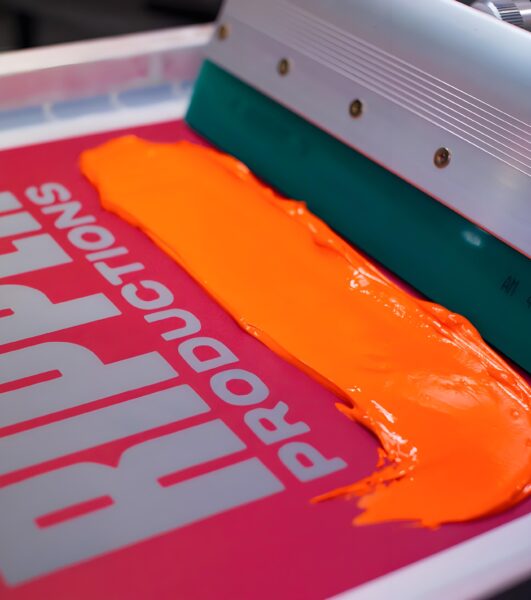Thinking about diving into the world of textile art, or ready to level up your screen print game? This comprehensive post covers everything you need to know about screen printing ink, the best-speedball and jacquard options, how to choose fabric screen printing ink, and tips for painting on fabric like a pro. From learning the basics to deep-dives into water-based, opaque, and plastisol ink, you’ll discover why digging into the intricacies of ink for screen printing can unlock a whole new world of creative textile printing possibilities. Whether you’re a DIY screen printing enthusiast or exploring textile screen printing for business, there’s something here for every art lover.
Table of Contents
1. What is Screen Print and Why Is It Important for Textile Art?
Screen print is a centuries-old printing process that remains the backbone of the modern textile screen printing industry. With a simple silk screen and a squeegee, you can turn blank fabric into wearable art, decorative textiles, or bold home décor. The versatility of screen print lies in its ability to produce vibrant colors, crisp details, and repeatable patterns, making it a favorite among artists, designers, and screen printers alike.
Textile printing has never lost its appeal—when you screen print on fabric, you’re not just transferring ink; you’re crafting something both personal and lasting. Whether using screen printing ink for a one-off statement tee or a full run of art prints, the process bridges traditional craftsmanship and contemporary style in a way few other mediums can.
Screen printing’s broad appeal stems from its flexible nature. It handles everything from block printing and direct printing to multi-layer art prints, all while letting you experiment with a range of screen printing supplies, including fabric ink, acrylic paint, and cutting-edge series inks. Dive in, and you’ll find yourself hooked by the tactile joys of textile screen printing and the thrill of seeing your designs pop on fabric.
2. How Does Screen Printing Ink Work on Fabric?
If you’re new to printing on fabric, you might wonder: how does screen printing ink bond to textiles? In screen printing, a stencil—usually cut into a silk screen—masks out certain areas, letting thick screen ink push through to the fabric only where the design sits. This method works with everything from synthetic fibers to classic cotton, letting you create printing applications for just about any textile you can imagine.
The quality of your fabric screen printing ink will determine not just the look but also the longevity of the finished print. The best inks offer vibrant color, exceptional opacity, and strong wear through washing and repeated use. Whether you’re using an acrylic-based ink or going for a water-based or plastisol option, understanding your ink’s properties is key to getting stunning results in textile screen printing.
The adhesion process relies on more than just the ink’s formula. Heat setting (or curing) the print, especially with many acrylic or plastisol inks, ensures your design is ready for rough-and-tumble wear or frequent washing. Every time you prepare to screen print on fabric, consider the unique characteristics of your chosen ink and textile for best results.
3. What’s the Difference Between Water-Based, Plastisol, and Acrylic Screen Printing Inks?
Navigating the world of screen printing ink can feel overwhelming, but understanding the major types helps you choose the right fit for your textile projects. The three titans—water-based, plastisol, and acrylic—each have unique strengths and quirks.
Water-based ink soaks into the fabric, leaving a soft, breathable print perfect for t-shirts and art prints. It’s prized for eco-friendliness and ease of use, though achieving deep opacity on dark fabrics can sometimes be challenging. With water based inks, the feel is part of the appeal—your designs seem to become one with the fabric, rather than sitting on top.
Plastisol ink is the mainstay of the screen printing industry for commercial work. It delivers robust color opacity and sits atop the textile, great for bold, durable designs on both light and dark fabrics. Plastisol ink is forgiving for beginners and pros alike, but must be heat set at high temperatures, and it can feel heavier or slightly “plastic” to the touch.
Acrylic screen printing ink bridges the gap, offering good versatility for both textiles and paper. While acrylic paint itself is often used for block printing or painting on fabric, dedicated acrylic screen printing inks provide a vibrant, flexible finish that stands up well to washing. Whether you’re an experimental DIY screen printer or a pro seeking reliable series inks, acrylic options offer flexibility and color brilliance.
4. Choosing the Right Fabric Screen Printing Ink for Your Project
When starting a new textile project, hobbyists and pros face a dizzying array of ink for screen printing. The secret? Match your ink to your printing method, fabric type, and desired finish.
If you want soft, wearable prints, water-based screen-printing ink is a smart choice, especially for cotton or blends. For printing onto synthetic fabric or dark garments where opacity is crucial, a quality plastisol or opaque fabric screen printing ink remains unbeatable.
Acrylic screen printing inks strike a nice balance, especially for art prints or mixed-media pieces where flexibility and vibrant colors matter. With the variety of fabric screen printing ink available today—including specialized options like permaset supercover for extreme opacity—you can find the sweet spot between print feel, durability, and hue.
Final pro tip: test your textile ink on a sample swatch first, ensuring it delivers the look, opacity, and durability your project needs before moving to full runs or final products.
5. Is Speedball Fabric Screen Printing Ink Good for Textile Printing?
Among DIY and professional screen printers, Speedball fabric screen printing ink earns rave reviews. This user-friendly ink offers vibrant color, smooth texture, and an accessible price point, making it a favorite in art classrooms and home studios. Whether you’re exploring block printing or full-blown textile screen printing, Speedball’s water-based inks provide reliable coverage on natural fibers and some synthetic blends.
The biggest advantage? Speedball fabric screen printing ink is easy to use and simple to clean up with water, especially for beginners. It boasts strong color choices and flexibility—wonderful for art prints, bold t-shirts, or even painting on fabric for mixed-media projects.
However, as with most water-based inks, prints may require heat setting to ensure long-lasting wash-fast results. If you need maximum opacity on dark fabrics, consider Speedball’s opaque series inks, which are designed for vivid coverage and durability on a range of textiles.
6. Exploring Jacquard Professional Screen Inks: Are They Worth It?
For those who seek professional-grade results, Jacquard professional screen printing ink is a standout. Crafted with artists in mind, Jacquard offers a full range of screen printing supplies and ink options, allowing fantastic results on an array of fabrics.
Jacquard’s inks are engineered to provide high opacity, vibrant colors, and flexible performance—exactly what you want when tackling detailed or multi-color art prints. Their professional screen ink performs beautifully for both direct printing and more experimental textile printing applications.
A unique strength of Jacquard inks lies in their compatibility with both stencils and silk screen printing, ensuring crisp lines and solid coverage, even when using intricate block printing or fine mesh techniques. If consistency, color quality, and durability matter most in your textile printing projects, Jacquard is certainly worth considering.
7. Starting Out: What Comes in a Fabric Screen Printing Starter Set?
If you’re itching to get hands-on with screen print but not sure where to begin, a fabric screen printing starter set is an easy way in. Most starter sets bundle the essentials: a silk screen, squeegee, stencil material, and a selection of screen printing ink, often curated for best results on fabric.
Look for sets that include both water-based and opaque fabric screen printing inks so you can experiment on light and dark fabric. Some kits, like the Speedball or Jacquard starter sets, provide several ink colors, offering immediate creative freedom with no guessing about compatibility.
Starter sets often also supply a beginner’s guide, pointing you through the basics of stencil creation, ink handling, and proper curing for textile ink. This makes them a smart investment for hobbyists, art students, or anyone yearning to try their hand at printing on fabric.
8. Tips for Printing on Fabric: Getting Opaque Colors on Dark Fabrics
Printing onto dark fabrics can be tricky, especially if your ink lacks sufficient opacity. Opaque screen printing ink or plastisol ink is your best friend for these challenges, as they’re specifically designed to deliver vivid, non-transparent colors on any textile background.
To maximize opacity, use a screen with the appropriate mesh count (lower mesh for thicker ink layers), and consider an underbase layer—a first pass with white or neutral screen ink to knock out the dark textile hue before printing your vibrant top colors. Brands like Permaset offer “Supercover” and “Aqua” series inks, specially engineered for coverage and bold color on dark garments.
Remember, the key to durable, opaque fabric screen printing on darks is solid curing. Heat set your finished print according to ink instructions—usually with a heat press or iron—to ensure lasting results that won’t fade, crack, or peel in the wash.
9. Specialty Inks: What’s New in the World of Permaset, Aqua, and Silicone Inks?
As technology evolves, so do the options for adventurous textile artists. The latest specialty inks, like Permaset Aqua and silicone inks, bring new possibilities to the world of screen print. Permaset Aqua, for example, has made waves by combining the eco credentials and soft hand-feel of water-based ink with professional-grade opacity and color brilliance—even on dark fabrics.
Silicone inks are another breakthrough, particularly when printing onto technical or synthetic fabric. These inks adhere where traditional plastisol or acrylic screen printing ink struggles, stretching and flexing without cracking. If you’re working with performance apparel or tricky synthetic fibers, silicone inks open fresh ground.
With these innovations, screen printers can now balance eco-friendliness, vivid color, and compatibility with almost any textile—no more need to sacrifice print quality for sustainability or fit.
10. Essential Screen Printing Supplies and Ink Sets for Every Studio
Every printing studio, whether crammed into a corner or expansively pro, starts with a few key screen printing supplies. At the top: a sturdy silk screen, squeegee, basic stencil materials, and your chosen fabric ink or screen printing ink set.
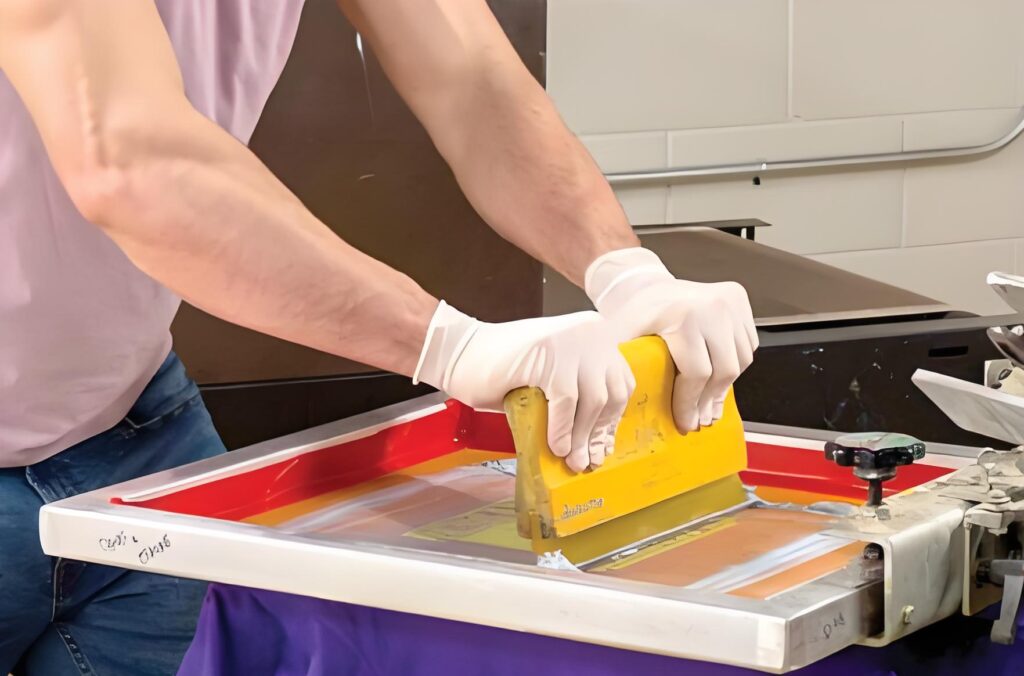
A screen printing ink set usually includes a rainbow of colors—sometimes water based, sometimes plastisol or acrylic—plus mixing guides to help you craft just the hue you envision for your textile. Excellent ink offers high opacity, robust durability, and an easy-to-work-with texture.
Don’t forget other screen printing supplies like cleaning agents, plastic spatulas, and a heat press or iron for curing. For block printing, invest in a good block printing ink, while DIY screen fans might love experimenting with both traditional and digital stencil creation. Ultimately, the range of screen printing supplies and inks available today means there’s never been a more exciting time to dive into the screen printing textile scene.
Key Takeaways
- Screen print lets you create bold, custom designs on almost any textile, from t-shirts to home decor.
- Choosing the right screen printing ink (water-based, plastisol, or acrylic) is key to your print’s feel, durability, and color.
- Speedball fabric screen printing ink is great for beginners, while jacquard professional screen inks provide pro-level results.
- Fabric screen printing starter sets offer everything you need to begin your printing adventure.
- For vivid colors on dark textiles, use opaque or plastisol ink and always heat set for wash fastness.
- Specialty inks—like permaset aqua and silicone inks—expand what’s possible with current screen printing industry tech.
- Stock up on high-quality screen printing supplies for smoother, more efficient creations.
- Whether you love block printing, direct printing, or experimental screen print methods, today’s range of fabric screen printing ink sets and art materials has something for every artist.
- Practice, experiment, and always test your screen ink on a fabric swatch before a full run.
- The key to brilliant textile printing is matching your materials, process, and inks to your creative goals.
Ready to get inky? Grab some supplies and start turning your textile visions into reality with screen printing!
-1024x915.jpeg)


